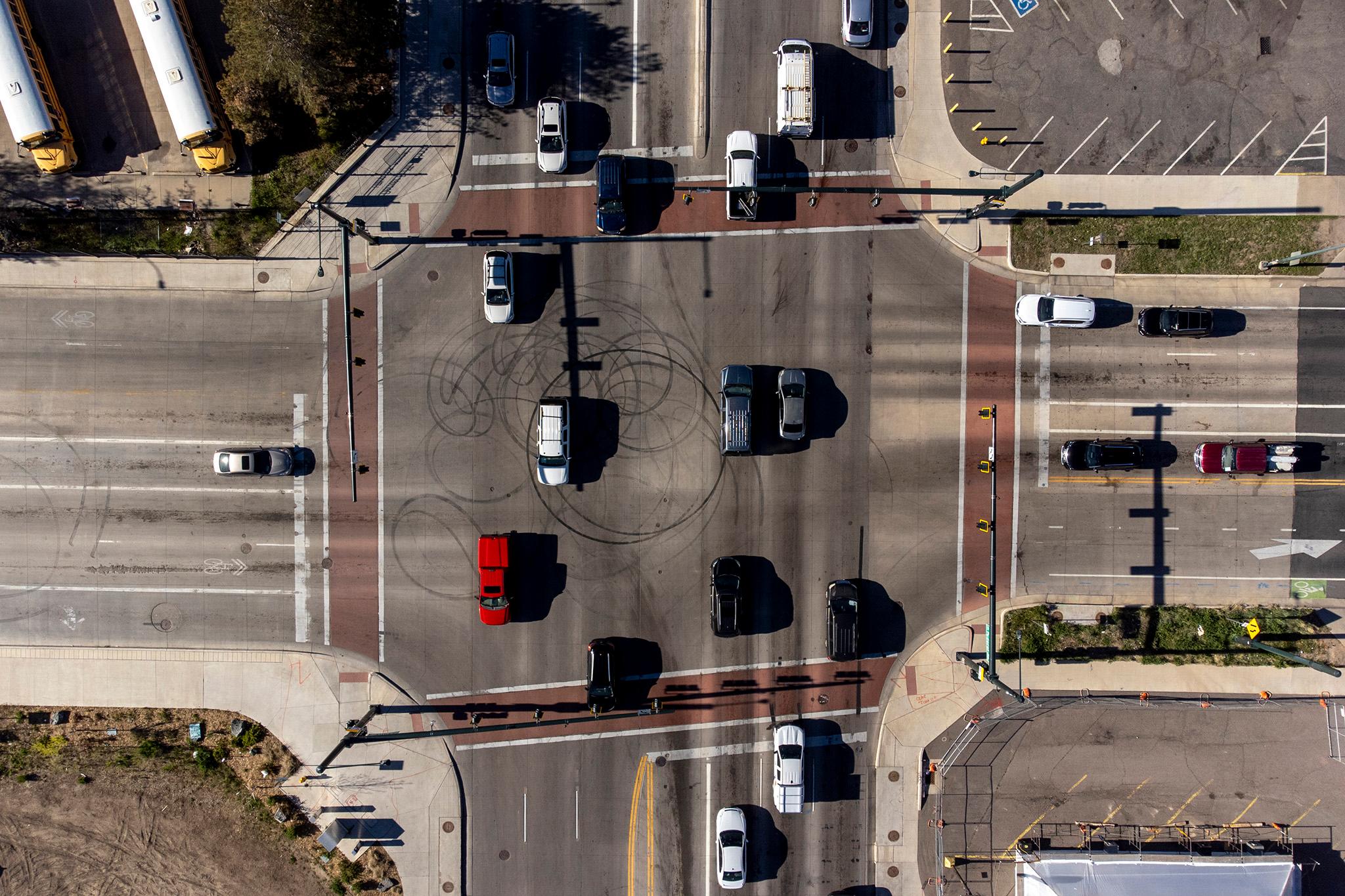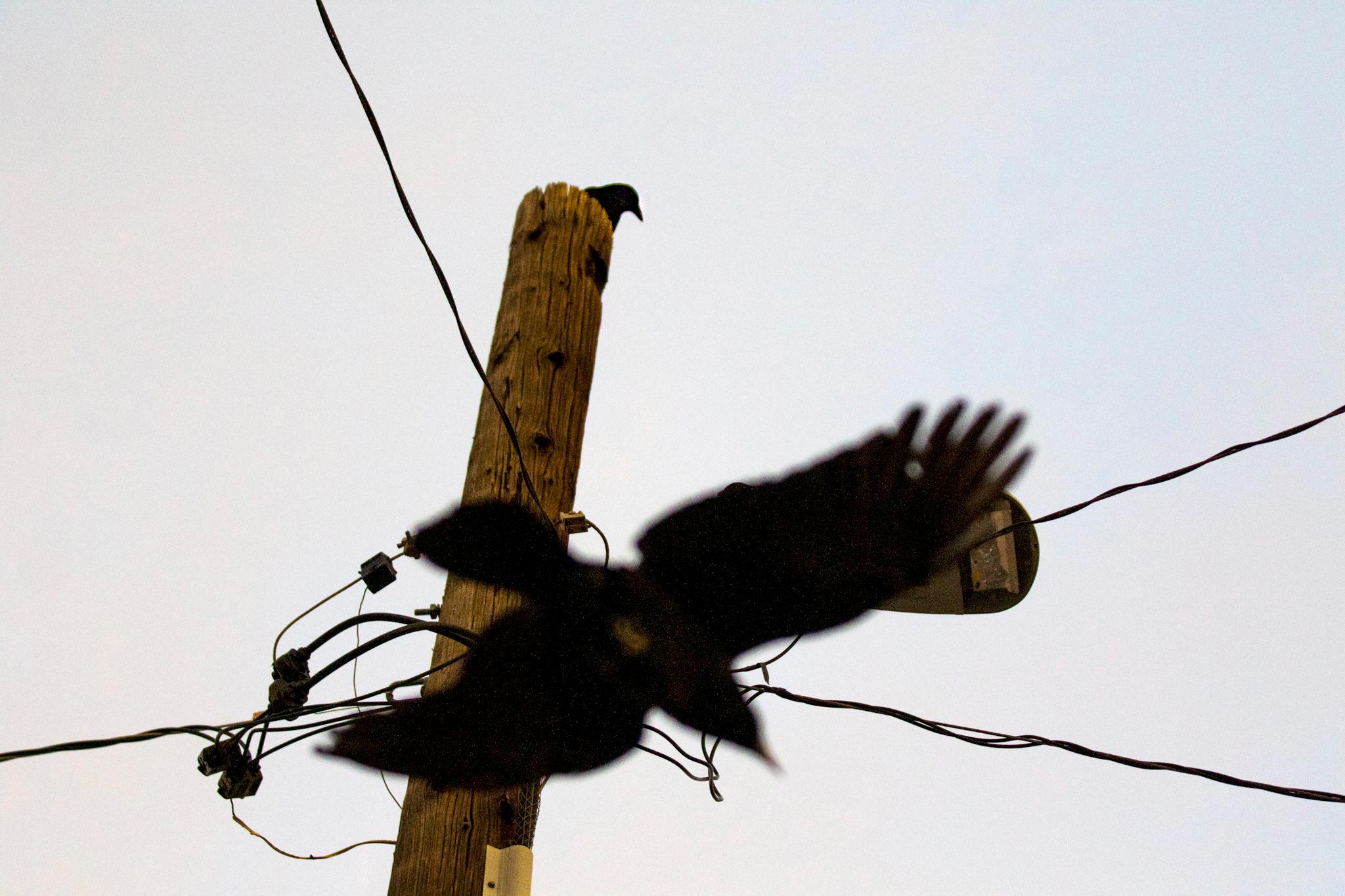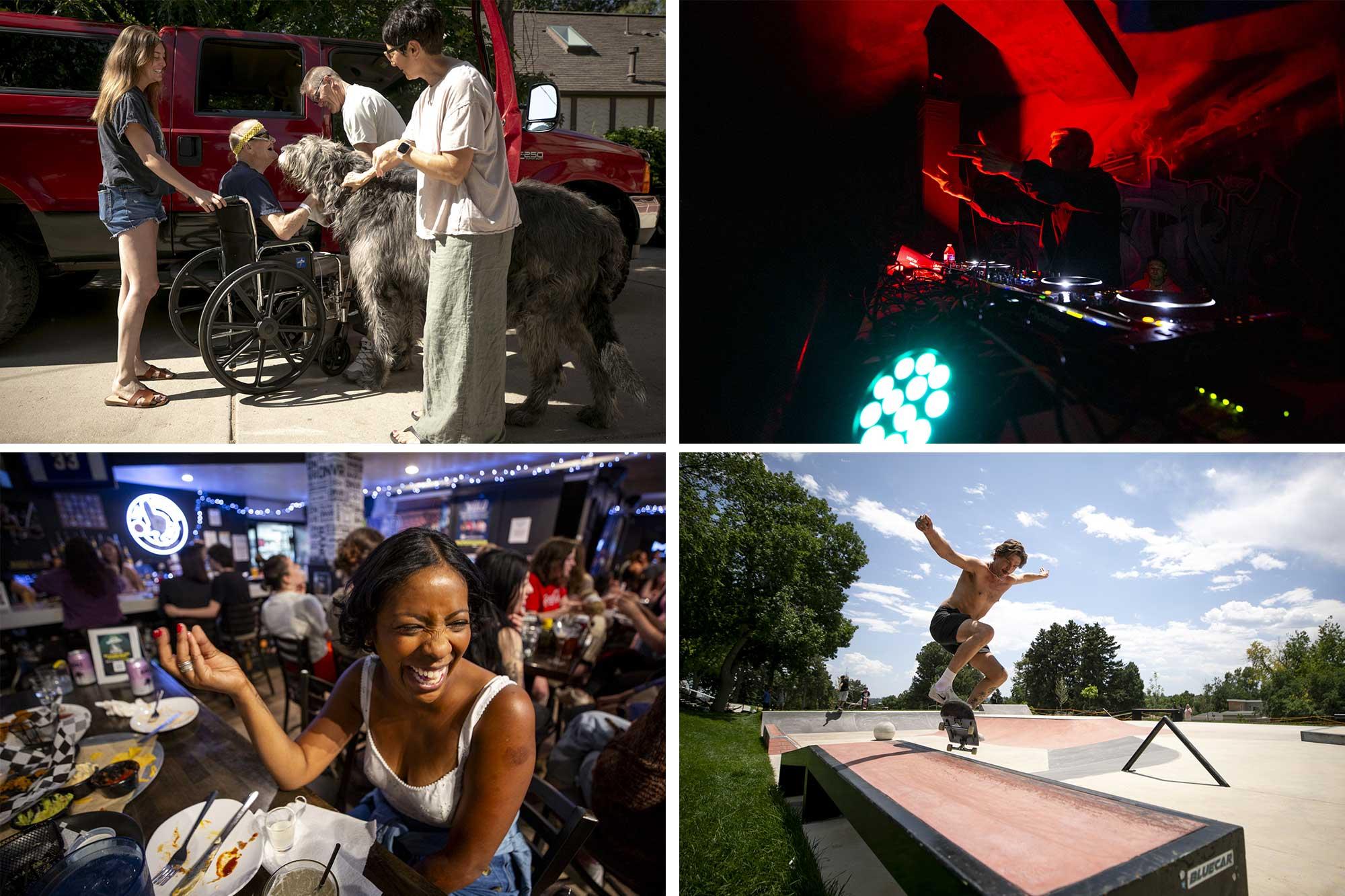Denver will issue more automated speeding tickets, adjust traffic signals and add more speed limit signs on particularly dangerous streets in an attempt to slow speeding drivers and prevent deadly crashes.
The changes will roll out over the next six to eight months, and amount to Mayor Mike Johnston’s recommitment to the city’s “Vision Zero” goal of eliminating traffic deaths and serious injuries by 2030.
“We believe this strategy can help us get there,” Johnston told reporters at a press conference on Monday.
Rather than blame drivers for causing crashes, the Vision Zero philosophy puts the onus on city officials to make their transportation system safer — primarily through street redesigns that encourage slower speeds.

Former Mayor Michael Hancock made the Vision Zero pledge nearly a decade ago. But both serious injuries and deaths have risen since then, partially because, advocates say, the Hancock administration’s strategies weren’t as bold as the Vision Zero goal.
More than 80 people have died in traffic crashes in Denver every year since 2021 — the highest numbers of Hancock’s 12-year term, city data show.
Now, the Johnston administration says it wants to cut traffic deaths by half over the next two years. And it believes that slowing speeders is the key way it will make that happen.
Johnston and his traffic team highlighted five methods they are going to try.
And it even figured out how to make them an acronym:
- Saturate dangerous roads with speed limit and feedback signs
- Program traffic signals to slow traffic.
- Engineer signals at night to default to red
- Expand use of signal timing that gives pedestrians a head start
- Deploy speed enforcement, including both mobile speed vans and automated speed cameras
City officials say they chose those strategies because they will be effective — and they can be done quickly and cheaply.
“If we deploy them all in a coordinated way, we think we get dramatic transformation in terms of safety, in terms of outcomes,” Johnston said.
The city will focus first on two particularly dangerous roads: Federal Boulevard from 52nd to Floyd Avenue, and Alameda Avenue from Sheridan Boulevard to Havana Street. Each corridor will cost about $1 million.
Just before Hancock left office last year, his administration called for a citywide speed limit of just 25 mph — including on wide arterial streets like Federal that now have much higher speed limits and also account for a bulk of the city’s traffic deaths.

But the city under Johnston isn’t pursuing lowering those speed limits — at least not right now, said Denver Department of Transportation and Infrastructure Executive Director Amy Ford.
“We want the cars to go the speed limit. That is our priority,” Ford said, adding: “Then we want to learn how we tackle the reduction of speed on those same corridors.”
Many arterial streets, including both Federal and Alameda, also double as state highways. Changing the speed limit on those would require the approval of the Colorado Department of Transportation, which has been receptive to such requests in recent years.
Johnston’s new SPEED program has support from other corners in city hall, and outside of it too.
Denver City Council is “overwhelmingly” supportive of Johnston’s push, said Council President Jamie Torres. Enforcement cameras reduce interactions between police officers and drivers and have reduced speeding and crashes in their limited use in the city already.
“I'm really proud of the direction that they've gone,” Torres said of the Johnston administration.
Street safety advocates, too, have endorsed Johnston’s plan. Jill Locantore, executive director of the Denver Streets Partnership, also appeared at the City Hall press conference and called it a “momentous day.”

“We are pleased to see the administration's plan to tackle these challenges head on,” Locantore said, calling out the increased use of automated enforcement cameras as being particularly important.
June Churchill, the Denver Bicycle Lobby’s Bike Mayor, echoed those comments — and cautioned that Denver’s streets need more than cameras, signs and other quick interventions.
“They don’t solve the underlying problem,” she said. “Our roads are dangerous by design.”
City officials say there's room for both strategies. They mentioned still planning big, time-intensive infrastructure safety projects, like those happening soon on Josephine and York streets and one that just started on West Colfax.
“The single most effective way to have people not speed is to have them know they'll be accountable for speeding, as well as creating the ecosystem that makes it easier to not speed,” Johnston said. “I understand that. I have sped before and I have been held accountable for it before and I changed my behavior as a result.”













